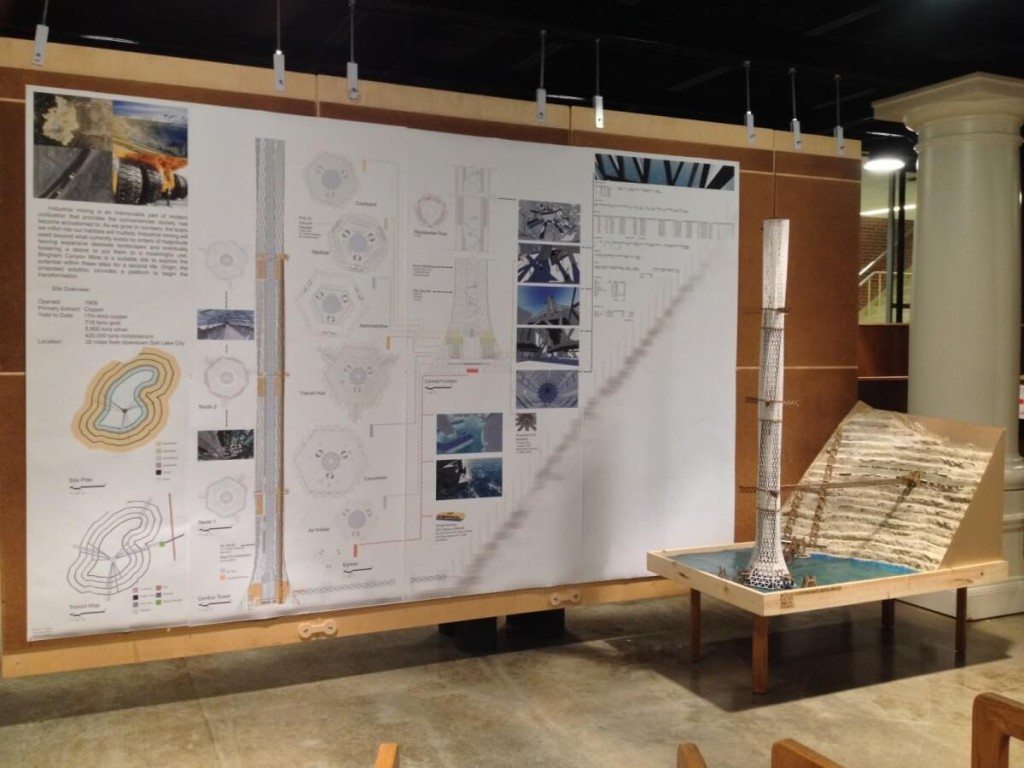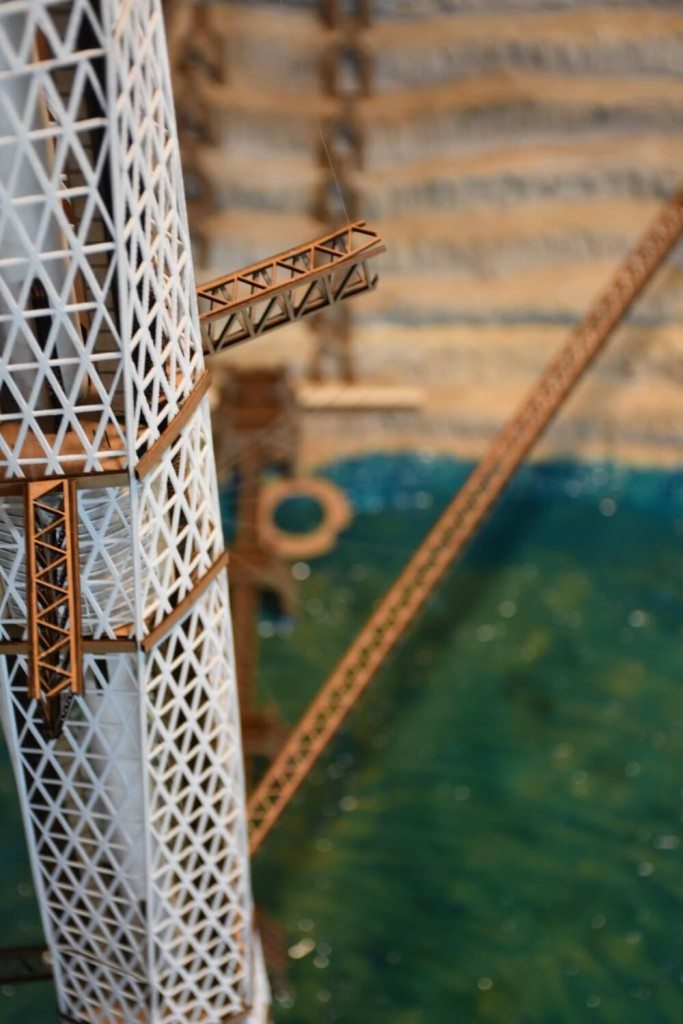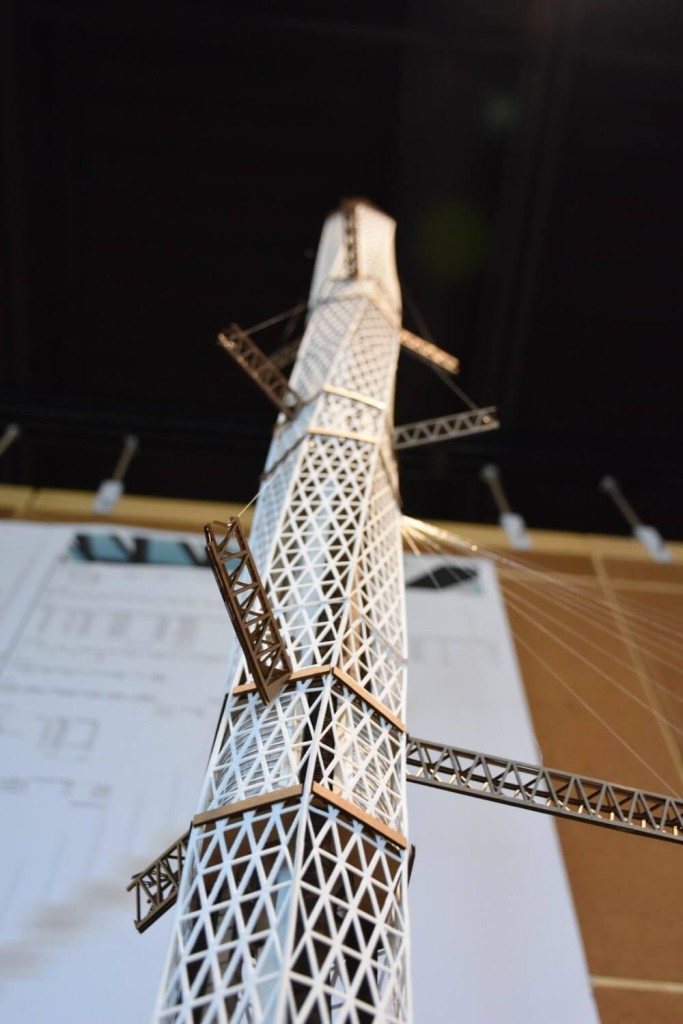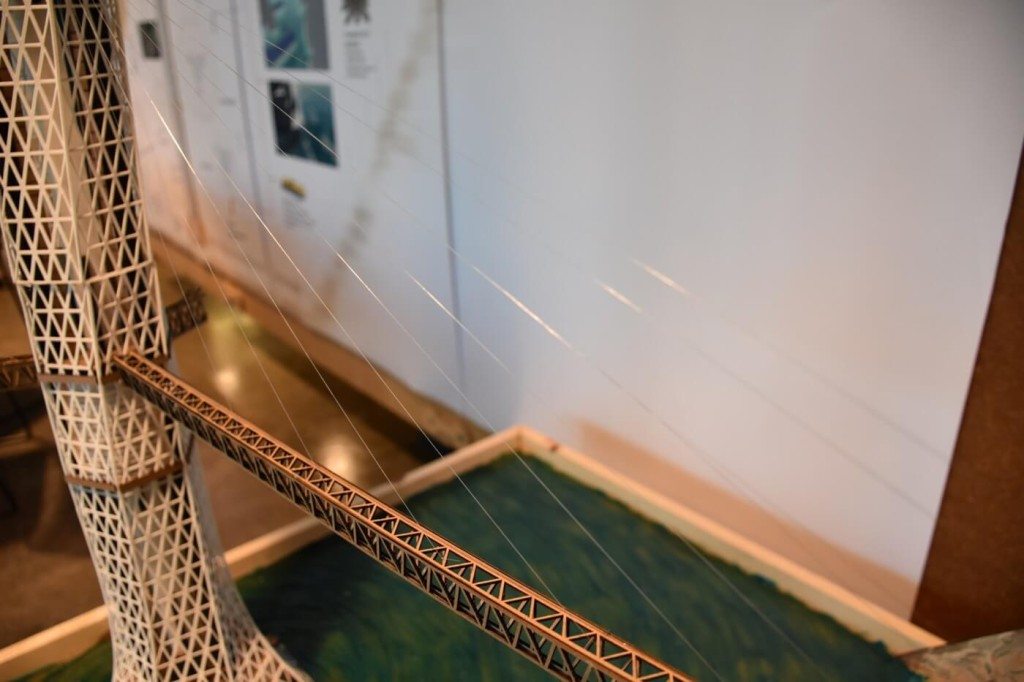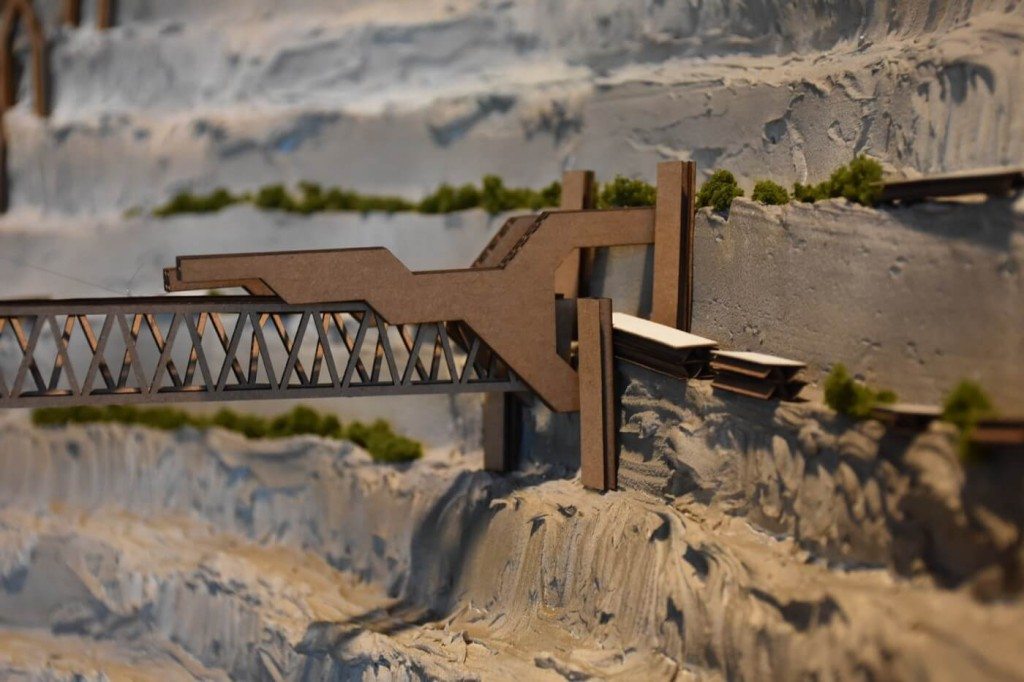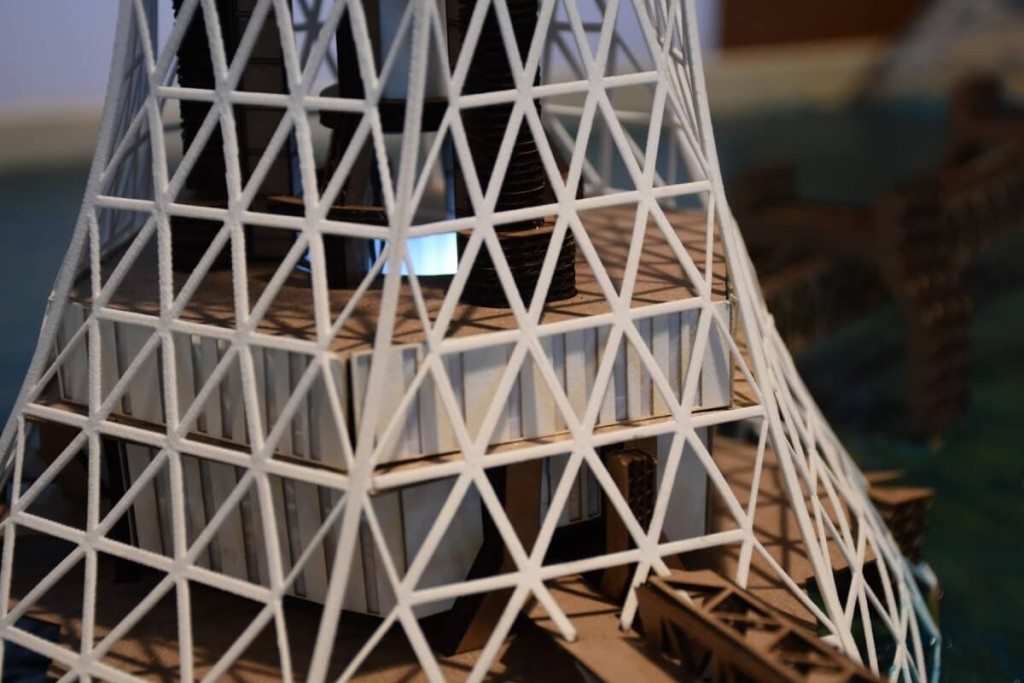Re-purposing Exhausted Industrial Mining Sites Through Central Infrastructure
Human civilization has progressed to the point where the demolition of enormous tracts of land in search of natural resources is common. These processes leave behind landscapes that are forever altered. Open pit mining is a centuries old method of extracting ore that leaves behind holes, sometimes miles wide, of terraced earth that are eventually abandoned. This paper will outline the creation of a reclamation plan at the Bingham Canyon Mine in Utah utilizing a central structure that may be applied to any large scale mining application.
Industrial mining has become a business of mountain destroying. Huge swaths of land are altered in the search for minerals. As our species continues to populate, demand for minerals will cause the scale and scope of mining operations to increase exponentially. These mammoth openings are well suited for the green building aspirations in architecture. Several prominent successful examples exist now including: the Ereen Mine in Mongolia, the Welzow-South Coal Mine in Germany, and the Black Mesa Mine in Arizona.
Earth’s caretakers have displayed a poor effort in preserving an irreplaceable habitat through extensive pollution. The material gains to society may be worth the damage done on the surface in a short term view but will ultimately cost humanity ecological stability. It is arguable that since many of these mines are in remote locations they are innocuous, but that should not preclude us from investigating if these sites hold any value beyond minerals extracted.
This thesis proposes to demonstrate a master plan development model that provides zoning requirements, a suggested layout, and includes a detailed designed multi-use central building that will include necessary support infrastructure for a city of 100,000 people.
Full paper available upon request.
